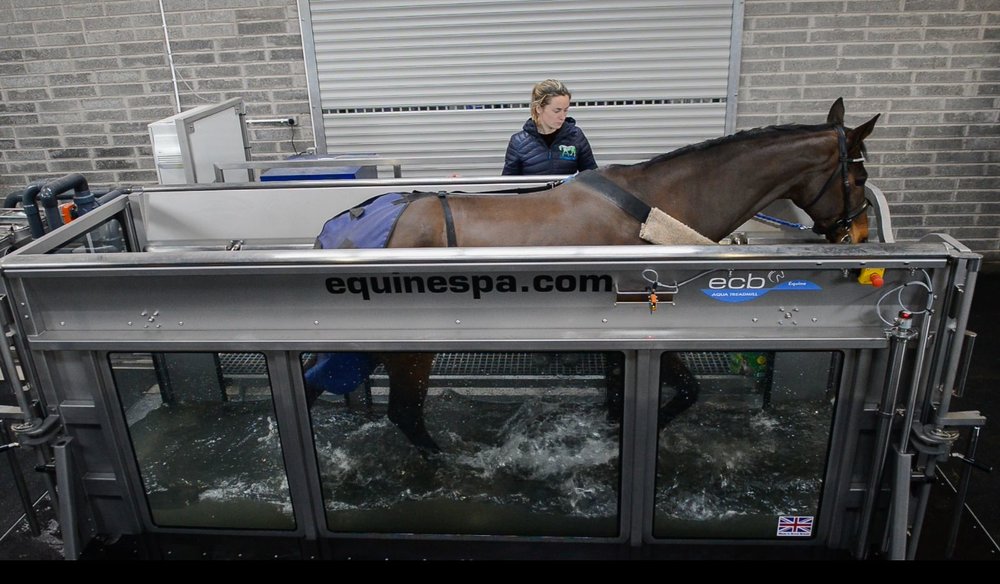What is horse hydrotherapy?
Horse hydrotherapy refers to the therapeutic use of water to improve the health and well-being of horses. It’s widely used within the equine industry to aid in horse rehabilitation, performance, and general health and fitness.
Methods of Equine Hydrotherapy
Hydrotherapy can be applied to horses in a variety of ways. Cold hosing is the most basic method, which involves spraying cold water on a horse’s injury. While it’s a common method of hydrotherapy due to its convenience and simplicity, it’s not the most effective approach and can be time-consuming.
Thanks to advancements in equine therapy and rehabilitation, equipment such as water treadmills, and equine spas offer more effective hydrotherapy methods for horses.
How Does Horse Hydrotherapy Work?
Hydrotherapy works on a few different levels, each can be manipulated and emphasized depending on the needs of the horse and the method of equine hydrotherapy used.
Buoyancy. When moving in water, the horse’s body weight is supported. This means a lot less strain is put on the muscles and joints making it an effective low-impact training method for horses returning to exercise post-injury/surgery or to aid in the recovery of current injuries.
Temperature. The temperature of the water can be manipulated. Cold water will allow for the benefits of cold therapy such as reductions in pain and inflammation and enhanced blood flow.
Resistance. Water creates resistance for a horse when they are exercising. This makes it a great training tool for strengthening muscles and improving cardiovascular fitness.
Pressure. Water pressure helps improve blood flow and reduce swelling and inflammation in joints and ligaments.
Salt therapy. The infusion of Epsom salts and magnesium in water not only promotes recovery but also serves as a potent defence against infections.
Two common methods of horse hydrotherapy and the benefits they provide for equine athletes.
Horse Hydrotherapy Using Water Treadmills
Research has shown that exercising on a water treadmill is effective for improving the strength and endurance of a horse as well as for rehabilitation and recovery purposes. A session involves a horse walking on a treadmill with a moving belt or track submerged in water. As the horse walks forward, the belt moves in the opposite direction which creates a controlled environment where the horse can engage in low-impact exercise while benefiting from the buoyancy and resistance provided by the water.
The ECB aqua treadmill allows for features such as speed, water depth, and incline to be adjusted to increase or reduce the intensity of the workout. Cold temperatures are used and salts can be added for additional benefits.
Below are the key advantages of exercising your horse on a water treadmill:
- Aids in the recovery and management of a variety of specific injuries/conditions including tendon and ligament injuries, back injuries, Joint injuries, laminitis, arthritis, etc.
- Develops stronger muscles & core strength
- Improves aerobic capacity and overall fitness
- Increases circulation & Joint mobility
- Reduces inflammation
- Encourages a bigger stride length
- Helps relieve general stiffness and soreness
- Improves post-competition strain
- Promotes lateral flexion of the back
ECB water treadmills come equipped with cutting-edge technology and performance analysis capabilities, enabling the creation and storage of customized training and rehabilitation programs for each horse. Additionally, the option to purchase a heart rate monitor for the water treadmill allows you to monitor their cardiovascular fitness progress by tracking their heart rate over time.

Horse hydrotherapy using equine spas
Equine spas, also called hydrotherapy spas, differ from aqua treadmills in their design and operation. Hydrotherapy sessions in an equine spa consist of a horse standing stationary in a saltwater solution that is chilled. Below are the common features of an equine spa.
Cold temperature. A temperature between 2°C/35°F and 4°C/37°F reduces inflammation, provides analgesic pain management, and inhibits enzyme degeneration of tendons post-injury.
Salt concentration. The water in equine spas consists of a high salt concentration which has a natural healing effect on wounds. The salt solution also increases water density which in turn increases pressure to aid fluid and waste dispersal.
Massaging effect. Water jets create a turbulent flow of water within the chamber creating a gentle massaging effect, improving circulation, and alleviating muscle tension.
Water depth. The depth of the salt solution can be adjusted in the spa allowing for specific injuries to be targeted on the horse’s body.
There are numerous benefits of using equine spas, including treating conditions such as arthritis, and laminitis, enhancing recovery from soft tissue damage, and helping to prevent the occurrence of future injuries.
Find out more about the ECB equine salt spa here.

For a long time, the therapeutic power of water has been utilized in the equine industry and continues to be regarded as an effective, natural, and drug-free therapy for improving the health of equine athletes.
ECB’s Equine spas and water treadmills offer effective approaches to horse hydrotherapy, proving beneficial for equine rehabilitation, recovery, and conditioning.
If you’re interested in purchasing an ECB product or would like more information, please contact us here.
